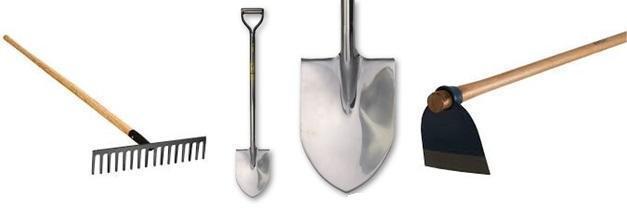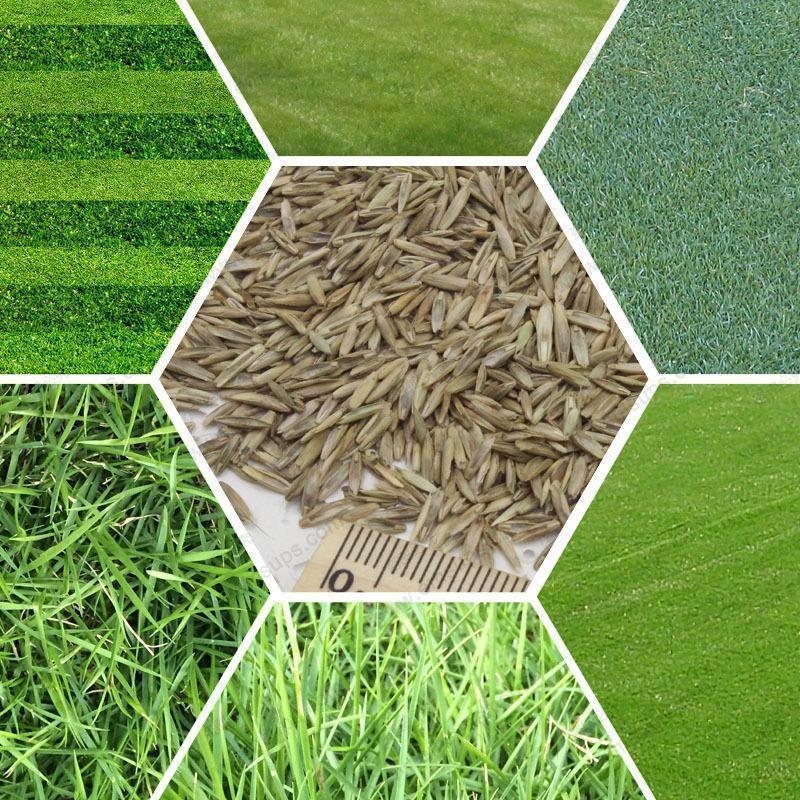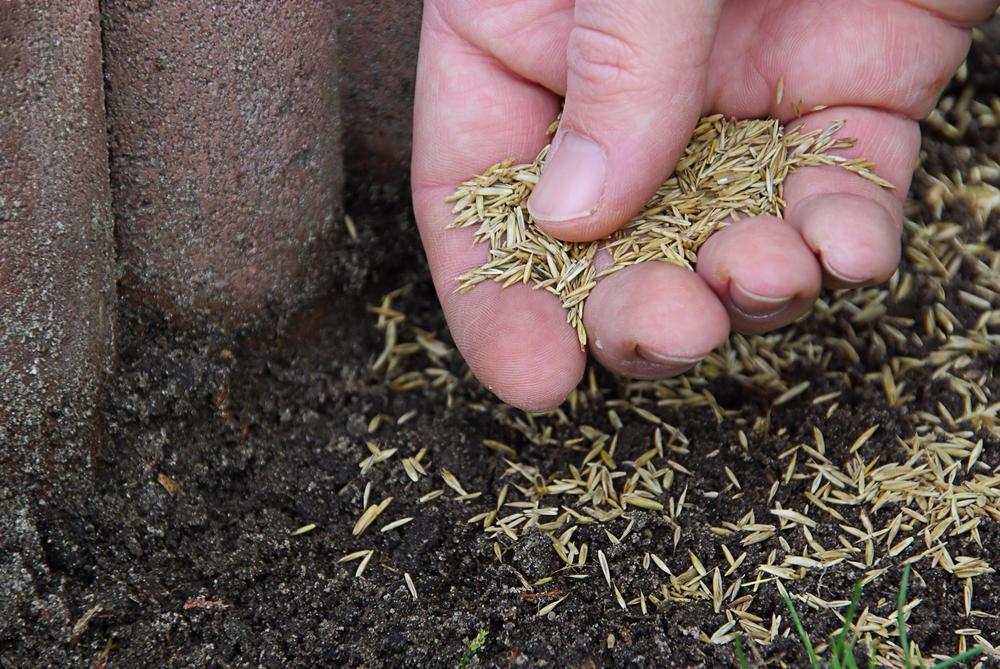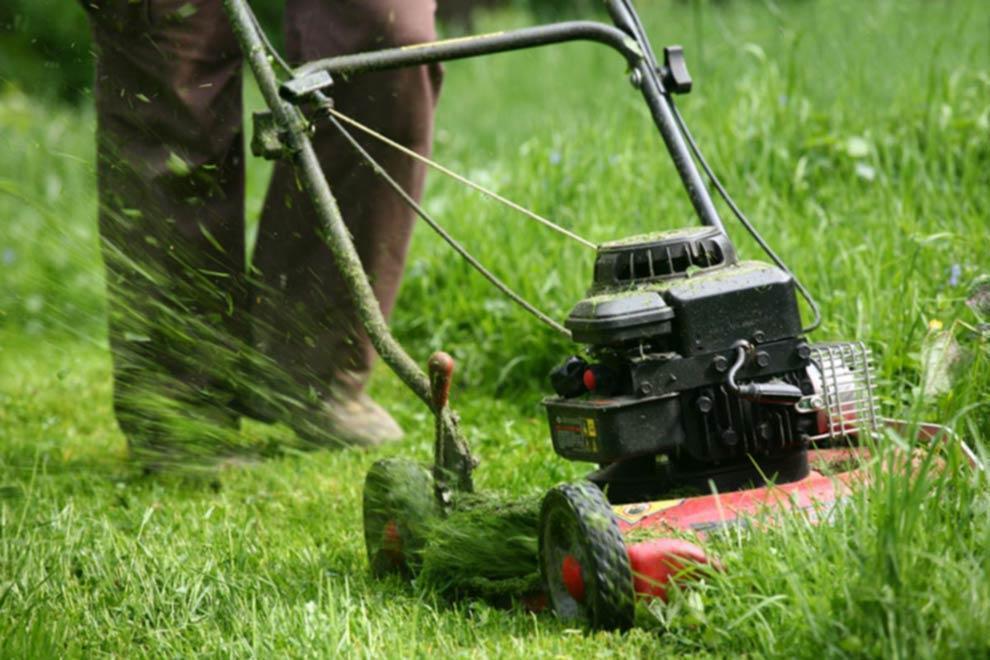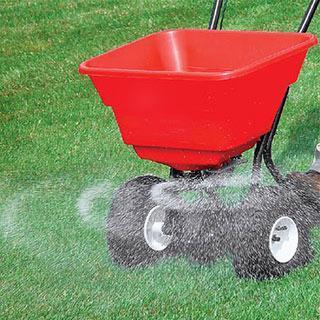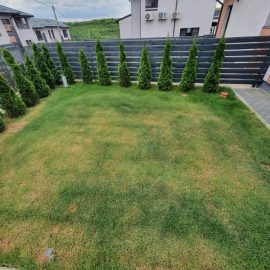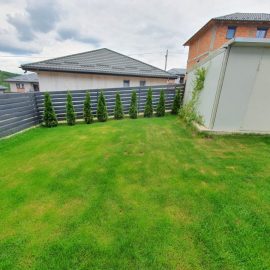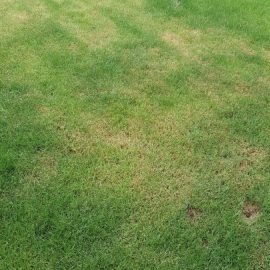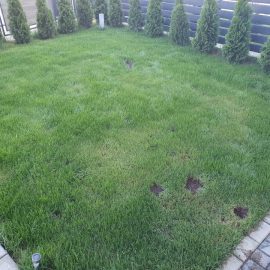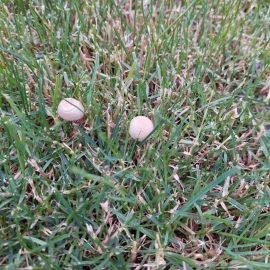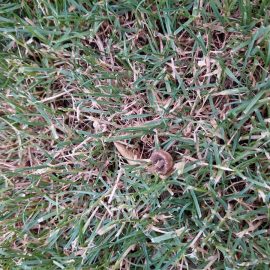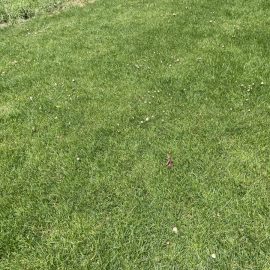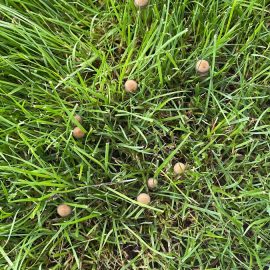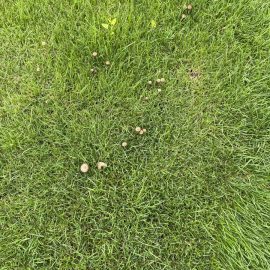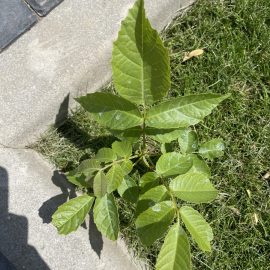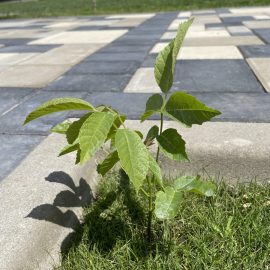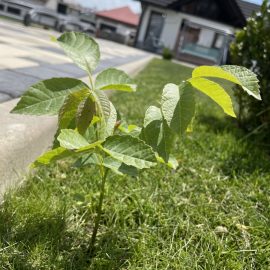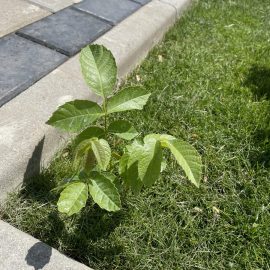Lawn – Establishment and care guide
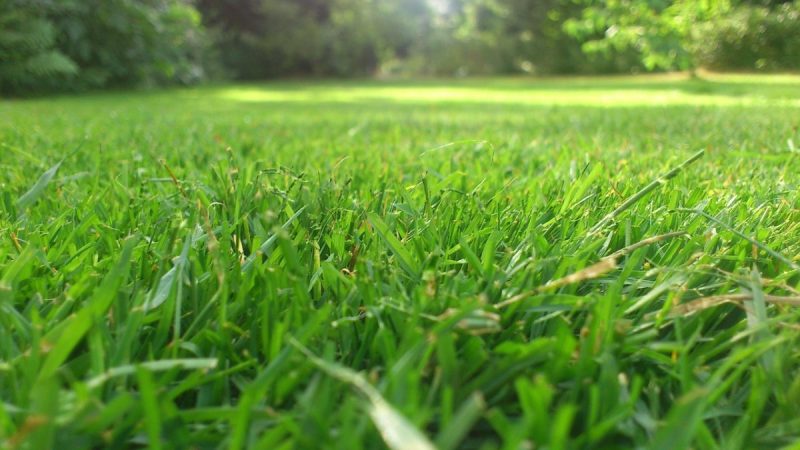
The lawn is a vital element in most gardens. Besides the fact that it looks very nice, the lawn highlights other species of plants or flowers, ensuring a neutral background. The explosion of colors in the garden is much more pleasant with a green area, with which it comes in contrast. In addition to its important role in landscaping, the lawn is also used for arranging playgrounds or spaces for sports activities. Thus, if you want to have a beautiful lawn, it is vital to know all the stages that make up the processes of setting up and maintaining the lawn culture.
LAWN ESTABLISHMENT
Soil preparation
Creating a perfect lawn begins with proper soil preparation.
Deep soil plowing at a depth of 20-30 cm (20 cm for sandy soils, 25 cm for clay soils, 30 cm for loamy soils. This work is recommended to be done in autumn or at least 3-4 months before sowing so that the soil accumulates water and settles. This procedure can be performed with the plow, in the case of large areas, or with the tiller, in the case of medium or large areas. If you want to sow grass on a small area, the plowing of the soil can be done manually with a hoe or spade.
Grinding and leveling the ground are two operations that will influence the overall appearance of the lawn. Grinding can be done with a tiller or a hoe. Leveling is performed with a rake. Simultaneously with the leveling, the remaining boulders must be crushed and the plant debris from the soil has to be collected. Sowing the lawn is essential to be done on perfectly level ground without ridges or furrows.
Applying fertilizers. If the soil in your garden is not fertile, has been plowed (e.g. after building a house) or is heavy permeable soil, sand and compost should be incorporated into the soil in a ratio of 1: 1: 1.
Fertilization before sowing should be done by applying fermented manure in a dose of 5 kg / square meter, supplemented with NPK mineral fertilizer. Never use fresh or unfermented manure.
Weed control. For effective weed control, after preparing the soil, the weeds should be allowed to grow 5-10 cm, then a non-selective herbicide must be used. After applying the herbicide, a break period of about 5-7 days is mandatory (depending on the nature and size of the weeds).
Recommended products
-
You can find products on a different store
Change Store -
You can find products on a different store
Change Store -
You can find products on a different store
Change Store -
You can find products on a different store
Change Store -
You can find products on a different store
Change Store -
You can find products on a different store
Change Store -
You can find products on a different store
Change Store -
You can find products on a different store
Change Store -
You can find products on a different store
Change Store -
You can find products on a different store
Change Store -
You can find products on a different store
Change Store -
You can find products on a different store
Change Store -
You can find products on a different store
Change Store -
You can find products on a different store
Change Store -
You can find products on a different store
Change Store -
You can find products on a different store
Change Store -
You can find products on a different store
Change Store -
You can find products on a different store
Change Store -
You can find products on a different store
Change Store -
You can find products on a different store
Change Store -
You can find products on a different store
Change Store -
You can find products on a different store
Change Store -
You can find products on a different store
Change Store -
You can find products on a different store
Change Store
Choosing the seed mixtures
A high-quality lawn is the result of the association of several species and varieties of grass whose characteristics complement each other, covering the soil with a dense and uniform carpet.
The main grass species used for lawns are Agrostis spp.; Cynodon spp.; Cynosurus spp.; Festuca spp.; Lolium spp.; Phleum spp.; Poa spp.; Alopecurus spp.; Arundinaria spp.; Arundo spp.; Calamagrostis spp.; Carex spp.; Cortaderia spp.; Glyceria spp.; Miscanthus spp.; Stipa spp.; Pennisetum spp.; Stipa spp.; Seed mixtures should be chosen depending on the purpose of the lawn (for the garden, sports, etc. ) and depending on the soil on which they will be sown.
Examples of seed mixtures
- for heavy soils with high resistance to compaction: Lolium perene 20% + Festuca rubra rubra 25% + Poa pratensis 15% + Festuca rubra 10% + Poa comuni 10 %;
- light soils with drought resistance: Lolium perene 40% +Festuca rubra 30 % + Festuca rubra litorallis 30%;
- sports training and playgrounds: Lolium perene 45% + Festuca arundinaceea 25% + Festuca rubra rubra 10% + Poa pratensis 10%;
- for resistance to compaction, shade and infrequent mowing: Lolium perene 30% + Festuca rubra litorallis 25% + Festuca rubra duriuscula 10% + Festuca rubra 15% + Poa pratensis 15% + Agrostis tenuis 5%;
- shaded lands, but with low resistance to compaction: Poa silvicola 20 % + Festuca rubra 30 % + Festuca rubra litorallis 20% + Poa communis 15%;
- meadows, resistant and unpretentious: Lolium perene 40% + Festuca rubra rubra 40% + Festuca ovina 20%;
- for slopes and sloping lands: Agropyron repens 40% + Agrostis stolonifera 40% + Deschampsia flexmosa 8% + Arenaria graminifolia 8%.
Sowing
The optimal sowing period is in spring, from March to May, and in autumn in September. The sowing season is chosen so that the freshly sown lawn is not affected by drought and high temperatures during the summer or by frosts during the winter. Sowing depth is 1-2 cm. The average quantity of seeds required for a square meter is 30-50 g. On small and rugged surfaces, sowing should be done manually at approx. 40 cm above the ground in parallel and perpendicular strips, and on large surfaces it should be done mechanically.
Before sowing, a shallow raking is done at a depth of 3-4 cm. Mix the seeds with sand (for even distribution) and divide them into two equal parts. The first half should be sown following the length of the lawn, and the second half in a perpendicular direction (width). To work smoothly, the strips must be about 1 m wide. The edges of the lawn have to be sown closer, in a strip of about 50-70 cm.
After sowing, the seeds have to be covered by raking lightly, in one direction, so as not to disturb the seeds in the soil. It is recommended to perform the rolling operation to better put the seeds in contact with the soil. After sowing, the land must be watered with the help of the spray gun, with a douche of water as fine as possible so as not to disturb the seeds.
The first maintenance works
An important element in the development of a young lawn is water. The lawn needs about 12 liters of water / square meter/week. In the absence of precipitation, watering should be done constantly (daily at the beginning). Watering should be done in the morning or in the evening (recommendable). When the young plants reach a height of 5 cm, light compaction should be done for good rooting. And when the plants reach a height of 8-10 cm, the first mowing is performed. Before the first mowing, light compaction should be performed and another after mowing. Weeds may appear on the lawn during this period. These have to be removed manually, and after you mow the lawn 3 to 4 times, they will disappear, being suffocated by the lawn.
Mowing
It is the most important maintenance work for obtaining a beautiful lawn. This procedure stimulates the plants to tiller and grows horizontally. Mowing should be performed approximately once a week during the maximum growing period. Other than that, the frequency of mowing should be reduced. Proper mowing should reduce the height of the lawn by 30-50%. The normal mowing height is 4 cm. In case of drought or high temperatures, it can increase to 5-6 cm. Mowing must not be done when the lawn is wet.
Watering
It is indispensable in times of drought. All plants need water to live, and the lawn is no exception. One square meter of lawn needs about 12 liters of water/week. For efficient irrigation, the following aspects are essential:
- the entire volume of applied water must penetrate 10-20 cm into the soil;
- spraying for short amounts of time is harmful, favoring the appearance of diseases or weeds;
- under normal conditions, watering must be done once a week;
- sprinklers or spray guns have to be used for a good distribution of water on the lawn surface.
Aeration
Compaction caused by rain, traffic, or irrigation has negative effects on the lawn. The lawn can become suffocated and suffer irreparable damage. To solve this problem, the “aeration” of the lawn should be performed. It consists in making close holes in the lawn with a fork or aerator (a spiked cylinder). The operation is carried out in spring and autumn, after aeration, sand is spread on the lawn.
Fertilization
This stage completes the lawn care process. During the vegetative growth period, the lawn’s requirements in relation to nitrogen are very high, so you can use NPK (17-6-5) 50 g / square meter. The first application should be done in spring when the lawn starts to grow. The procedure must be repeated in May and at the end of June. At the beginning of November, you can apply NPK (13-25-12) 30-50 g / square meter. As a result, the lawn will be ready for the cold season. Fertilization can be done manually or with a spreader. In addition, the lawn responds positively to the application of foliar fertilizers.
Recommended products
-
You can find products on a different store
Change Store -
You can find products on a different store
Change Store -
You can find products on a different store
Change Store -
You can find products on a different store
Change Store -
You can find products on a different store
Change Store -
You can find products on a different store
Change Store -
You can find products on a different store
Change Store -
You can find products on a different store
Change Store -
You can find products on a different store
Change Store -
You can find products on a different store
Change Store -
You can find products on a different store
Change Store -
You can find products on a different store
Change Store -
You can find products on a different store
Change Store -
You can find products on a different store
Change Store -
You can find products on a different store
Change Store -
You can find products on a different store
Change Store -
You can find products on a different store
Change Store -
You can find products on a different store
Change Store -
You can find products on a different store
Change Store -
You can find products on a different store
Change Store -
You can find products on a different store
Change Store -
You can find products on a different store
Change Store -
You can find products on a different store
Change Store -
You can find products on a different store
Change Store
Weed control
Even if all the stages and rules of lawn maintenance have been followed, weeds can appear on your lawn. The most common species are Ranunculus acris, Anagallis arvensis, Bellis perennis, Taraxacum officinale, Plantago major, Polygonum aviculare, Veronica, Trifolium. The herbicides used against them must be selective so as not to destroy the lawn.
Recommended products
-
You can find products on a different store
Change Store -
You can find products on a different store
Change Store -
You can find products on a different store
Change Store -
You can find products on a different store
Change Store -
You can find products on a different store
Change Store -
You can find products on a different store
Change Store -
You can find products on a different store
Change Store -
You can find products on a different store
Change Store -
You can find products on a different store
Change Store -
You can find products on a different store
Change Store -
You can find products on a different store
Change Store -
You can find products on a different store
Change Store -
You can find products on a different store
Change Store -
You can find products on a different store
Change Store -
You can find products on a different store
Change Store -
You can find products on a different store
Change Store -
You can find products on a different store
Change Store -
You can find products on a different store
Change Store -
You can find products on a different store
Change Store -
You can find products on a different store
Change Store -
You can find products on a different store
Change Store -
You can find products on a different store
Change Store -
You can find products on a different store
Change Store -
You can find products on a different store
Change Store
Diseases and pests
The most common lawn diseases are powdery mildew, red thread disease, fusarium patch, dollar spot, rust. Among the pests, the most common are wireworms, slugs, mole crickets.














































































































































































































































































































































































































































